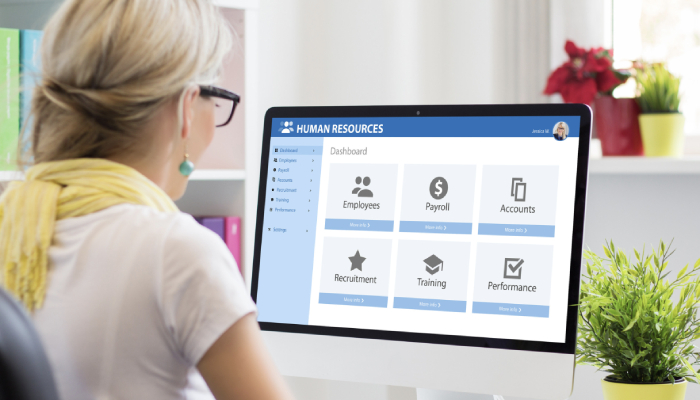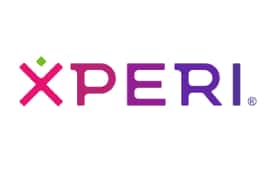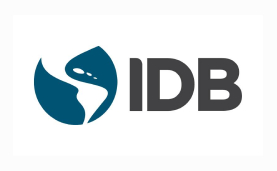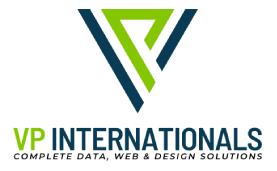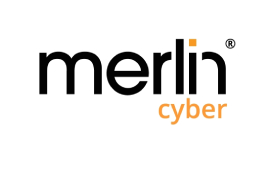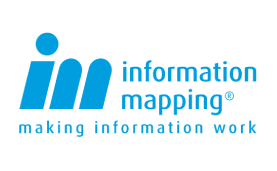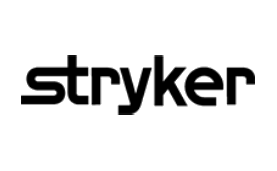As of 2025, the highest-ROI generative AI applications are those that directly convert hours of skilled human work into automated throughput: automated report generation for regulatory and audit purposes, AI-assisted knowledge management that surfaces subject matter expertise instantly, personalized marketing creative at scale (text + imagery), and automated technical authoring for product / process documentation. ThirdEye Data measures ROI not just in cost savings but in time-to-decision and revenue enablement — for example, enabling faster campaign launches with AI-generated creatives that translate directly into higher conversion rates, or reducing the time finance teams spend on monthly close by automating draft narratives for variance explanations. The consistent ROI drivers are repeatability, measurable time savings, and tight integration into existing approval workflows.
Yes, enterprises can now build simple generative AI applications with minimal coding using no-code platforms or AI app builders. These platforms typically offer drag-and-drop interfaces, pre-built templates, and direct integration with foundational models through APIs. However, while these tools are excellent for proof-of-concept and internal utilities, they often fall short when enterprises need fine-tuned accuracy, domain control, or complex data integrations. ThirdEye Data often assists business teams by helping them transition from these basic prototypes into robust, production-ready systems. Our engineering teams refine the model prompts, integrate secure data pipelines, and introduce quality and compliance guardrails so that what started as a simple “no-code” pilot evolves into a dependable enterprise-grade AI solution.
Python remains the dominant programming language for generative AI development due to its rich ecosystem of libraries (PyTorch, TensorFlow, Hugging Face Transformers) and strong community support. Its versatility allows engineers to build, fine-tune, and deploy both text and multimodal models efficiently. JavaScript/TypeScript is increasingly popular for embedding generative AI into web applications, enabling real-time interaction with end-users without requiring backend-heavy infrastructure. Emerging languages like Mojo are gaining attention for high-performance AI computing, particularly in model training at scale. At ThirdEye Data, we select languages based on the use case: Python for model development and fine-tuning, JavaScript/TypeScript for front-end integration, and specialized high-performance languages for heavy computational workloads, ensuring optimal balance between speed, maintainability, and scalability.
Absolutely, Python is still the preferred language for developing generative AI models because of its extensive AI/ML ecosystem, simplicity, and compatibility with most open-source frameworks. Libraries like PyTorch, TensorFlow, Hugging Face, and OpenAI’s APIs make prototyping, fine-tuning, and deploying models faster and more reliable. Python also integrates easily with data pipelines, cloud services, and monitoring tools, which is crucial for enterprise adoption. ThirdEye Data leverages Python extensively not only for model training and fine-tuning but also for integrating models with enterprise systems, ensuring solutions are both technically sound and operationally scalable.
JavaScript and TypeScript are vital for integrating generative AI models into web applications, dashboards, and SaaS platforms. They allow real-time inference, dynamic content generation, and interaction with APIs such as OpenAI or Anthropic directly from the client side or through serverless backends. TypeScript adds type safety and maintainability, which is particularly valuable for large-scale enterprise applications. ThirdEye Data often uses these languages for deploying interactive AI-driven tools, such as customer-facing chatbots, creative content generators, or web-based automation systems, providing a seamless interface while maintaining robust backend operations in Python or other high-performance languages.
Emerging languages like Mojo are designed specifically for AI and ML workloads, offering optimized compilation, faster execution, and lower memory footprint compared to traditional languages. These languages are particularly advantageous for high-volume, latency-sensitive inference and large-scale model training, where speed and resource efficiency directly impact ROI. ThirdEye Data evaluates these technologies for projects requiring intensive computation or where deployment at the edge is a priority. While still nascent, languages like Mojo represent the next frontier in performance-focused generative AI development, providing enterprises with opportunities to reduce costs and improve throughput without compromising accuracy.
The most widely used frameworks for generative AI development include PyTorch, TensorFlow, Hugging Face Transformers, OpenAI’s API suite, LangChain, LLaMAIndex, and NeMo Megatron. PyTorch and TensorFlow support both research experimentation and production deployment with GPU/TPU acceleration. Hugging Face and LangChain simplify the integration of large language models and RAG pipelines. NeMo Megatron enables multimodal AI development, particularly for voice and video tasks. ThirdEye Data leverages a combination of these frameworks, choosing the right tool for each task to maximize performance, fine-tuning flexibility, and enterprise-grade reliability. Our approach ensures that clients benefit from state-of-the-art capabilities without overcomplicating infrastructure or operational processes.
Open-source frameworks accelerate generative AI development by providing pre-built architectures, pretrained models, and extensive community support. PyTorch allows fast prototyping, gradient-based optimization, and seamless GPU utilization, while Hugging Face provides access to a wide array of LLMs and fine-tuning utilities. ThirdEye Data leverages these frameworks to build enterprise-ready, customized solutions more quickly and cost-effectively than from scratch. Additionally, open-source frameworks allow us to implement transparent pipelines, perform rigorous model testing, and ensure governance compliance, crucial for enterprise adoption. This approach balances speed, control, and performance, enabling clients to achieve measurable business outcomes without compromise.
The choice depends on the enterprise’s priorities. Commercial APIs are ideal when speed-to-market, reliability, and model maintenance are critical, especially for non-core workflows or public-facing applications. Open-source fine-tuning is preferred when proprietary data, domain-specific knowledge, or strict compliance requirements demand complete control over the model and its deployment. ThirdEye Data often designs solutions that start with commercial APIs for PoC/MVP validation and then transition to open-source fine-tuned models for enterprise-wide deployment, ensuring that companies gain both speed and long-term adaptability.
ThirdEye Data integrates open-source models into production by first assessing the model’s fit for the use case, followed by domain-specific fine-tuning on proprietary data. We deploy these models on secure cloud or on-premise infrastructures and combine them with workflow orchestration, retrieval-augmented generation, and human-in-the-loop systems for quality assurance. For example, in knowledge management applications, we use LLaMA or Mistral for large-scale text generation, and NeMo Megatron for multimodal tasks involving audio or video synthesis. Our approach ensures scalability, low latency, and regulatory compliance, while also maintaining full control over enterprise data and outputs.
Cloud-based APIs offer rapid deployment, automatic model updates, and minimal infrastructure management, making them ideal for early experimentation and low-maintenance workflows. However, they involve data transmission to third-party servers, ongoing API costs, and potential latency for large-scale use. On-premise models, particularly open-source fine-tuned ones, provide full control over data privacy, custom integration, and compliance adherence but require investment in hardware, model optimization, and lifecycle management. ThirdEye Data advises enterprises to weigh these trade-offs carefully, often implementing hybrid architectures that combine cloud convenience for low-risk workloads with on-premise or private-cloud deployment for sensitive or mission-critical tasks.
Cost-effectiveness and scalability are achieved through a combination of right-sized models, modular architecture, and hybrid deployment strategies. ThirdEye Data often recommends starting with smaller, task-specific models or cloud API-based prototypes to validate use cases without significant upfront investment. Once validated, we scale using fine-tuned open-source models deployed on private or hybrid cloud infrastructures, ensuring enterprise control and cost-efficiency. Modular design allows components to be reused across workflows, reducing incremental development costs. Finally, continuous monitoring and model retraining prevent performance degradation, maximizing the ROI of AI investments while keeping long-term operational costs under control.
Integrating generative AI into existing systems requires careful planning, API orchestration, and workflow mapping to prevent disruption. ThirdEye Data approaches this by first understanding enterprise IT architecture and operational dependencies. We then design integration pipelines that respect existing data flows, ERP/CRM systems, and user interfaces. By embedding AI capabilities as modular services, we allow incremental adoption without requiring a complete system overhaul. Additionally, we implement governance, monitoring, and human-in-the-loop checks, ensuring that generative AI outputs are accurate, compliant, and actionable within day-to-day operations.
Common challenges include data silos, lack of standardization, latency concerns, compliance constraints, and user adoption resistance. Generative AI outputs may also require validation before being actionable. ThirdEye Data overcomes these challenges by establishing centralized, secure data pipelines, implementing retrieval-augmented generation to improve accuracy, and embedding audit and explainability layers to meet regulatory standards. Additionally, we provide training and change-management support to ensure that teams embrace AI-assisted workflows. This holistic approach reduces integration risk and accelerates adoption while maintaining operational continuity.
ROI can be measured through time savings, cost reductions, increased throughput, and improved decision quality. For example, automating report generation or contract drafting can significantly reduce labor hours while increasing consistency and accuracy. ThirdEye Data emphasizes establishing measurable KPIs before implementation, such as reduction in manual processing time, faster cycle times, or higher engagement metrics in customer-facing applications. We also track intangible benefits like improved employee satisfaction, innovation speed, and decision confidence. By combining quantitative and qualitative metrics, enterprises can clearly demonstrate the value of generative AI initiatives and justify further investment.
ThirdEye Data accelerates generative AI adoption by combining domain-specific knowledge, proven development frameworks, and hybrid deployment strategies. We begin with rapid PoCs using commercial APIs or low-code platforms to validate high-impact use cases, then transition to fine-tuned, production-ready solutions integrated into existing enterprise workflows. Our teams embed human-in-the-loop oversight, RAG architectures, and monitoring pipelines to ensure quality, compliance, and scalability. By handling both technical complexity and operational alignment, ThirdEye Data allows enterprises to quickly capture business value, minimize disruption, and confidently expand generative AI initiatives across multiple departments or use cases.
The future of generative AI application development is moving toward domain-specialized, multimodal, and agentic systems that combine text, image, audio, and video capabilities in a unified workflow. Enterprises will increasingly adopt AI not just for content generation, but as an intelligent co-pilot across business functions — from research synthesis and decision support to customer engagement and operational automation. ThirdEye Data anticipates a shift toward smaller, cost-efficient models for real-time tasks, coupled with larger models for strategic decision-making, enabling businesses to balance speed, accuracy, and cost. This evolution positions generative AI as a core enterprise tool, seamlessly integrated into daily operations rather than an experimental add-on.
Yes, the convergence of generative AI with agentic and autonomous systems is already underway. Generative models provide reasoning, creativity, and contextual understanding, while agentic AI adds decision-making autonomy, task orchestration, and workflow execution. ThirdEye Data is actively exploring hybrid architectures where multiple AI agents leverage generative capabilities to perform complex business processes autonomously, while human oversight ensures governance and compliance. This integration promises enterprises higher efficiency, faster decision-making, and continuous process optimization, transforming generative AI from a reactive tool into a proactive, operational asset.
Multimodal generative AI is revolutionizing enterprise innovation by enabling cross-format content creation, enhanced customer interactions, and richer data insights. For example, marketing teams can generate personalized campaign visuals with text-driven prompts, customer support teams can synthesize video tutorials automatically, and R&D teams can accelerate prototyping with AI-generated product design concepts. ThirdEye Data leverages multimodal models to unify enterprise workflows, allowing businesses to translate ideas across multiple media formats quickly and cost-effectively, increasing both creativity and operational efficiency. By combining text, visuals, and structured data, enterprises gain a competitive edge in speed, personalization, and scalability.
The next wave of generative AI frameworks focuses on agentic orchestration, small efficient models (SLMs), retrieval-augmented generation (RAG), and edge-deployable architectures. Tools like LangChain, LLaMAIndex, and Mojo are enabling highly modular and scalable AI pipelines, while advances in on-device AI and private deployment architectures improve performance, latency, and data security. ThirdEye Data monitors these trends closely, adopting technologies that balance cost, speed, and enterprise control. By combining RAG-based pipelines, multimodal architectures, and efficient SLMs, we build solutions that are not only innovative but operationally robust and cost-effective, ensuring enterprises can scale AI capabilities safely.
Future-proofing generative AI investments requires flexible architectures, modular pipelines, and continuous model governance. Enterprises should prioritize solutions that are platform-agnostic, cloud-hybrid ready, and compatible with both commercial APIs and open-source models. ThirdEye Data emphasizes building AI systems with scalable integration, explainability layers, and human-in-the-loop feedback, ensuring adaptability to new models, changing regulations, and evolving business needs. Regular monitoring, model retraining, and workflow optimization allow enterprises to maintain high performance while protecting their investment. In essence, sustainable adoption comes from designing AI solutions that are agile, accountable, and aligned with long-term enterprise strategy, not just one-off experiments.
TCO includes model licensing or API usage, compute infrastructure, data engineering, monitoring, maintenance, compliance, human-in-the-loop oversight, retraining, and energy usage. At ThirdEye Data, we consider direct and indirect costs, such as integrating AI into existing systems, scaling across departments, and continuous model governance. A clear understanding of TCO allows enterprises to compare deployment options, optimize architecture, and choose the right mix of cloud, edge, or on-premise deployment for cost-effectiveness and performance.
Training models on third-party or scraped data raises intellectual property, copyright, licensing, and privacy concerns. Additionally, models may inherit biases or generate harmful content. ThirdEye Data advises enterprises to audit data sources, implement licensing checks, and maintain provenance records. We also recommend fine-tuning on proprietary or ethically sourced datasets wherever possible and incorporating guardrails to prevent misuse. These practices minimize legal exposure and ensure ethical deployment aligned with corporate and regulatory standards.
Data privacy and security require encryption, access control, and prompt-level safeguards. ThirdEye Data guides enterprises in designing hybrid deployments, where sensitive data may remain on-premise while non-sensitive processing occurs in the cloud. Additionally, we enforce audit trails, data anonymization, and compliance with local laws such as GDPR, CCPA, and HIPAA. By combining architectural choices, governance policies, and provider risk assessment, we ensure that enterprises can safely leverage cloud AI services without exposing sensitive information.
Bias can originate from training data, model architecture, or workflow integration. ThirdEye Data employs bias detection, fairness testing, and continuous monitoring throughout the model lifecycle. We also implement RAG pipelines, human-in-the-loop validation, and explainability tools to ensure outputs are interpretable and actionable. Additionally, domain-specific fine-tuning helps reduce systemic bias while aligning outputs with enterprise objectives. This multi-layered approach allows organizations to deploy generative AI responsibly and maintain trust with stakeholders.
Governance ensures transparency, accountability, and reproducibility. ThirdEye Data implements model registries, versioning frameworks, audit logs, and explainable AI techniques. Every change — from retraining datasets to parameter tuning — is tracked with approvals and documentation. Explainability methods allow stakeholders to understand model reasoning, while continuous monitoring detects drift, errors, or anomalous outputs. This structured approach mitigates operational and compliance risks while enabling enterprise-scale adoption with confidence.
Generative AI models, especially large-scale LLMs, can be energy-intensive. ThirdEye Data emphasizes efficient model selection, smaller task-specific models, optimized training pipelines, and cloud infrastructure with renewable energy options. By balancing model size, compute usage, and task requirements, enterprises can reduce carbon footprint while maintaining performance. Sustainability is increasingly a key KPI, ensuring AI initiatives align with environmental and corporate responsibility goals.
Generative AI adoption requires cross-functional teams, including AI engineers, data scientists, business analysts, compliance specialists, and change managers. Clear ownership of AI roadmaps, defined approval workflows, and training programs are critical. ThirdEye Data supports enterprises by designing team structures, skill development programs, and operational processes that ensure generative AI is embedded into daily workflows responsibly and effectively.
KPIs include accuracy, model drift, time saved, cost reduction, user satisfaction, revenue impact, and process efficiency. ThirdEye Data recommends monitoring both quantitative and qualitative metrics, such as error rates, adoption rates, and employee or customer satisfaction. Tracking these metrics continuously allows enterprises to optimize workflows, improve model performance, and justify ongoing investment in generative AI.
Scaling requires architecture redesign, modular pipelines, robust governance, and operational monitoring. ThirdEye Data helps enterprises transition from PoC to full deployment by introducing secure APIs, scalable cloud or on-prem infrastructure, redundancy, and compliance checks. We also incorporate monitoring and human-in-the-loop systems to maintain accuracy and reliability at scale, ensuring the solution delivers consistent business value across departments.
Regulated industries face compliance, privacy, and liability risks. For instance, finance requires auditability and fair decision-making, healthcare demands patient confidentiality and safety, and insurance mandates transparency. ThirdEye Data mitigates these risks with sector-specific governance, monitoring, and secure deployment practices, ensuring models meet regulatory standards while enabling operational efficiency and innovation.
Hallucinations - incorrect or misleading outputs, are mitigated with retrieval-augmented generation, confidence scoring, human-in-the-loop validation, and rule-based constraints. ThirdEye Data designs workflows where AI outputs are cross-verified against authoritative sources, flagged for review, and supplemented with context-specific guardrails. This approach ensures mission-critical applications remain reliable and compliant.
Large public models provide general knowledge, high accuracy, and scalability but come with higher inference cost, latency, and data exposure risk. Smaller fine-tuned models offer cost-efficiency, faster inference, and domain-specific accuracy, but require careful training and maintenance. ThirdEye Data advises a hybrid approach, selecting the right model size based on use-case criticality, data sensitivity, and operational requirements.
Generative AI models require continuous monitoring, retraining, and patching to stay accurate and relevant. ThirdEye Data implements automated pipelines for detecting drift, retraining on updated data, and maintaining version control. We also integrate alerts, governance checkpoints, and human oversight to ensure models remain compliant and operationally reliable throughout their lifecycle.
Adversarial attacks like prompt injection, data poisoning, or misuse can compromise model outputs. ThirdEye Data mitigates these risks with input validation, anomaly detection, secure API gateways, and monitoring systems, ensuring that AI applications remain robust, reliable, and protected against manipulation.
Enterprises operating globally must comply with different data privacy, export, and content regulations. ThirdEye Data assists by designing compliant architectures, geo-fenced deployments, and governance policies tailored to each jurisdiction. This ensures AI adoption scales across borders while minimizing legal and operational risks.
Generative AI augments human roles, automating repetitive tasks, enabling faster decision-making, and enhancing creativity. ThirdEye Data helps organizations redesign workflows, train employees, and define accountability, ensuring AI adoption improves productivity and engagement rather than displacing employees. Proper change management is critical to fostering a collaborative human-AI workplace.
Relying heavily on a single API or proprietary platform can create dependency, cost escalation, and reduced flexibility. ThirdEye Data advises a multi-platform, hybrid approach, combining commercial APIs for speed and open-source models for control. This reduces lock-in risk while retaining access to cutting-edge AI capabilities.
Performance depends on model size, deployment architecture, compute resources, and workflow complexity. ThirdEye Data conducts rigorous benchmarking, load testing, and optimization for inference speed and throughput. Efficient deployment ensures real-time performance where required and cost-effective scaling for enterprise workloads.
Generative AI infrastructure varies based on workload. Options include GPUs, TPUs, CPUs, cloud, hybrid cloud, or edge deployments. ThirdEye Data designs architectures that balance compute efficiency, cost, latency, and security, ensuring scalable, reliable AI deployments while accommodating enterprise constraints and growth.
Licensing costs include per-request API usage, enterprise subscriptions, commercial model licenses, and open-source support. ThirdEye Data helps enterprises forecast and optimize costs by selecting the right mix of commercial and open-source solutions, and by reusing modular AI pipelines across projects to maximize ROI.
Fallback mechanisms, such as human review, confidence scoring, rule-based validation, and multi-step verification, are critical in high-stakes applications. ThirdEye Data integrates human-in-the-loop workflows to ensure that outputs are accurate, compliant, and reliable, providing safety nets for mission-critical operations.
Regulatory frameworks for generative AI are evolving rapidly, with increasing focus on transparency, fairness, data protection, IP rights, and AI auditability. ThirdEye Data helps enterprises stay ahead by aligning AI systems with upcoming legislation, implementing explainability and governance frameworks, and ensuring cross-border compliance, reducing risk and enabling sustainable adoption.
A custom generative AI application for enterprises is a solution built specifically to address an organization’s unique workflows, data, compliance needs, and value drivers. Unlike generic tools, ThirdEye Data’s custom apps are fine-tuned to enterprise datasets, trained or adapted to internal taxonomies, and designed to embed within existing systems. We engage in deep discovery of business processes, understand what types of content or insight need generation (text, images, audio, multimodal), enforce brand, regulatory, and security standards, and deliver an AI application that not only generates content but becomes a trusted assistant across the organization—one that boosts efficiency, reduces manual work, maintains consistency, and provides measurable ROI.
While off-the-shelf tools offer rapid access and ease, they often lack domain relevance, struggle with compliance, and may expose proprietary data. ThirdEye Data advocates that custom generative AI investment pays off when you need control; over style, data handling, brand alignment, and output quality. We help enterprises fine-tune models on internal data, apply business rules, enforce security, and integrate with existing architecture so the AI’s output is not just generic but contextually precise, safely managed, and strategically aligned. The result is higher accuracy, greater trust, lower risk, and more sustainable long-term value compared to reliance on external, general-purpose tools.
Business problems that are repetitive, vocabulary- or knowledge-intensive, and benefit from scaling tend to be the ones custom generative AI handles best. For example, generating regulatory or compliance reports where formatting, references, and legal language must be precise; automating contract or technical document drafting with internal templates; knowledge base summarization in large organizations where capturing institutional memory is difficult; personalized customer engagement content; and creative prototyping or content generation for marketing. ThirdEye Data works with clients to prioritize such problems — ones where manual effort is high, mistakes are distracting or costly, and speed or consistency can create a competitive advantage.
At ThirdEye Data, assessing a use case involves evaluating multiple dimensions: the potential business value (time saved, cost reduced, risk mitigated), the quality and availability of data (do you have enough clean, representative examples?), sensitivity and risk (privacy, regulatory requirements), technical feasibility (is the task amenable to generation vs classification vs retrieval), and organizational readiness (do you have buy-in, change management capability?). If a use case has strong data, predictable outputs, measurable KPIs, and manageable risk, it’s seen as a good fit. Otherwise, we recommend starting with a smaller pilot or waiting until supporting infrastructure or data improves.
ThirdEye Data’s development lifecycle begins with a discovery phase where we understand business goals, existing systems, and data landscape. Next is a proof-of-concept or MVP stage to validate feasibility; this might use commercial APIs or open-source models to generate initial outputs. Once viability is demonstrated, the fine-tuning phase begins, using enterprise data and domain-specific inputs to adapt the model. Parallel to this is architecture design: secure data pipelines, integration with existing tools, UI/UX design, monitoring, and governance. Testing and validation then ensure compliance, accuracy, and usability. Finally, phased rollout follows, along with continuous monitoring, retraining, version control, and improvement once the system is live.
The decision depends on priorities such as cost, control, latency, data privacy, and domain specificity. For rapid prototyping and low-risk tasks, commercial models (GPT, Claude, etc.) often offer speed and ease. For sensitive data, or when specialized domain knowledge matters, open-source models fine-tuned in a controlled environment can provide better control and lower long-term cost. ThirdEye Data typically evaluates both options: we compare total cost of ownership, compliance risk, performance, and ability to meet SLA requirements. Often, a hybrid setup works best—using commercial models where acceptable and open-source/fine-tuned models for sensitive or high-impact components.
Fine-tuning starts with gathering relevant enterprise data, ensuring it’s clean, well-labeled, aligned with internal use (tone, domain, style). At ThirdEye Data, we preprocess data—removing noise, ensuring consistency, mapping proprietary terminology, and addressing missing or incorrect labels. Then we train the model with proper validation and test splits to avoid overfitting. We also embed business logic, compliance constraints, and evaluation metrics into training. Human reviewers are involved to correct model behavior, and after deployment, feedback loops ensure continuous learning from real-world usage, so the app becomes more accurate and aligned over time.
Retrieval-Augmented Generation is a strategy where the model is fed external, often enterprise-specific documents or knowledge selectors (via vector embeddings, semantic search) so it can generate responses grounded in up-to-date, trusted sources rather than purely relying on model internal knowledge. ThirdEye Data uses RAG for generative AI applications because it reduces hallucinations, ensures traceability (you know which document contributed), and allows updates to knowledge without retraining the entire model. For example, policies, regulations, or internal playbooks can be updated independently and the app reflects those changes in generated outputs.
Scaling generative AI requires both architectural readiness and organizational strategy. ThirdEye Data ensures scalability by building modular, API-driven systems that can be extended to new workflows or departments with minimal rework. Once the core model is proven in one department, it can be fine-tuned with additional data for others (for example, extending a document summarization AI from legal to finance teams). We also establish MLOps pipelines for model monitoring, retraining, and version control, which make it easier to scale responsibly. On the business side, we help enterprises form internal AI adoption frameworks and governance boards to prioritize expansion where the highest value can be realized.
Enterprises require outputs that are accurate, compliant, and brand-consistent—often conflicting goals in generative AI. ThirdEye Data strikes this balance by combining fine-tuning with rule-based post-processing. While the generative model brings creative capabilities, we overlay constraints such as controlled vocabulary, tone enforcement, template adherence, and fact-verification modules. Human-in-the-loop validation remains a key element, particularly for high-risk use cases like legal or financial content. Over time, feedback loops further refine the model’s creative freedom without sacrificing precision or compliance.
ThirdEye Data incorporates security at every layer: data ingestion, model training, deployment, and user access. Our security framework includes encryption (in transit and at rest), zero-trust architecture for model endpoints, secure prompt logging with redaction, and regular penetration testing. We also guard against prompt injection and adversarial attacks by implementing input sanitization and output monitoring. Moreover, we maintain audit trails for every AI action to support forensic analysis and compliance audits. Security isn’t treated as an afterthought but as an embedded pillar of enterprise-grade generative AI deployment.
In sectors like healthcare, finance, or insurance, auditability is essential. ThirdEye Data builds explainability and traceability into its generative AI systems. Each generated output can be linked back to the data source, model version, and generation context. For decision-support applications, we record metadata (prompt, source, confidence score, timestamp) so regulators or auditors can review how an outcome was produced. We also employ human approval checkpoints before final submission in compliance-sensitive workflows. This layered approach allows organizations to meet internal and external audit requirements without compromising automation.
Data silos are one of the biggest barriers to build effective AI solutions. ThirdEye Data helps enterprises unify fragmented data systems using a combination of data engineering, ML pipelines, and federated learning architectures. By establishing a unified data layer or feature store, we enable the AI system to access relevant and standardized data from multiple sources without physically merging them. This ensures that the generative AI model operates on comprehensive and clean data while preserving data ownership and minimizing transfer risks. In turn, it enhances context-awareness, consistency, and decision reliability.
Generic models like GPT-4 or Claude are excellent for general reasoning and language generation but may not understand domain-specific terminology, business logic, or compliance nuances. ThirdEye Data builds custom enterprise models that are fine-tuned on internal documents, SOPs, knowledge bases, and proprietary datasets. These models adhere to company guidelines, capture organizational tone, and avoid exposing confidential data to public endpoints. The result is a model that performs with higher precision, faster adaptation to enterprise context, and lower long-term operational cost while still benefiting from the foundational power of large pre-trained models.
At ThirdEye Data, we treat deployment as the beginning of the application’s lifecycle, not the end. Post-deployment maintenance involves continuous monitoring, feedback collection, and retraining cycles. Our MLOps pipelines track model performance, drift, and output quality metrics in real time. Whenever the enterprise updates its policies, product catalogs, or internal documents, we sync that data through retraining or knowledge-base updates using RAG pipelines. Regular patching ensures security compliance, while retraining on recent data maintains accuracy. We also schedule periodic audits to review biases, version changes, and performance degradations. This disciplined lifecycle management approach keeps enterprise generative AI apps trustworthy and aligned with evolving business conditions.
Measuring ROI requires combining quantitative and qualitative metrics. ThirdEye Data helps enterprises evaluate ROI across four main dimensions: cost reduction, productivity gain, revenue generation, and risk mitigation. We establish baseline performance before deployment and then monitor improvements—time saved per task, reduction in manual errors, increase in output volume, or faster decision cycles. For customer-facing applications, we also measure engagement metrics and satisfaction rates. Over time, we correlate these with operational costs and calculate tangible ROI. Beyond direct savings, we highlight strategic ROI—better employee experience, faster innovation, and improved competitive positioning—which are equally critical for long-term enterprise growth.
An effective UI is what turns a complex AI model into a usable enterprise tool. ThirdEye Data designs generative AI interfaces tailored to the roles and workflows of end users—be it analysts, sales executives, compliance officers, or engineers. Our front-end design emphasizes clarity, transparency, and control: showing confidence scores, citations, or rationale for each AI output. We enable easy feedback capture and seamless integration into platforms like MS Teams, Slack, Salesforce, or custom dashboards. The interface becomes a dynamic collaboration space between humans and AI, where trust, transparency, and usability drive adoption.
Bias is a structural issue that can arise from training data, model design, or feedback loops. ThirdEye Data proactively identifies and mitigates bias through a combination of data curation, fairness evaluation, and post-processing filters. We analyze datasets for representation gaps, perform fairness audits during testing, and use explainability tools to detect systematic bias in model outputs. Feedback from real users is also incorporated to understand any unintended bias that emerges post-deployment. For regulated industries, we document bias mitigation steps as part of AI governance reporting. The goal is to ensure that generative AI outputs align with enterprise ethics, regulatory requirements, and public trust.
Generative AI acts as a digital co-worker that automates repetitive, low-value tasks and enhances creative or analytical work. At ThirdEye Data, we’ve seen enterprises achieve significant gains in report generation, email drafting, document classification, and data summarization. Employees spend less time on manual compilation and more time on strategy and innovation. Additionally, with AI assistants embedded into workflows, employees receive context-aware recommendations and insights in real time. The net result is higher throughput, faster turnaround, fewer errors, and improved job satisfaction—AI complements human expertise rather than replacing it.
The main risks include misinformation (hallucinations), security vulnerabilities, privacy exposure, bias, and dependency on third-party APIs. ThirdEye Data mitigates these risks through robust testing, RAG grounding, sandbox validation, and tiered approval workflows for critical tasks. We also deploy human-in-the-loop systems for review and override, ensuring no automated decision goes unchecked in sensitive operations. Furthermore, we employ prompt sanitization and adversarial testing to detect potential weaknesses before production rollout. By combining preventive design and operational safeguards, we make generative AI safe for enterprise-grade, mission-critical usage.
Enterprises often face a trade-off between agility and control. ThirdEye Data resolves this tension by embedding governance frameworks directly into agile development cycles. Every sprint or iteration includes checkpoints for security, compliance, and ethical review. Automation tools handle much of the model monitoring, documentation, and versioning; allowing innovation to move fast without compromising oversight. We promote a “governed agility” model where the business can experiment with AI use cases safely, confident that controls around data, risk, and accountability remain intact.
The choice depends on how frequently the knowledge base changes. If your enterprise data or product catalogs are dynamic, a retrieval-augmented system (RAG) is better, it references the latest documents without retraining. If the task depends on stable, domain-specific knowledge or structured output (e.g., contracts, internal reports), fine-tuning is more efficient. At ThirdEye Data, we often combine both: a fine-tuned model for core behavior and a retrieval layer for contextual freshness. This hybrid approach provides the best balance of adaptability, performance, and cost efficiency for enterprise deployments.
Transitioning from pilot to production is where most enterprises stumble. ThirdEye Data helps bridge that gap by operationalizing the AI system—setting up MLOps pipelines, integrating with enterprise data systems, defining monitoring protocols, and aligning KPIs with business metrics. We standardize model governance, automate retraining, and deploy continuous integration pipelines. Beyond technology, we work with business leaders to manage organizational readiness—training teams, defining roles, and updating SOPs to incorporate AI-driven decisions. The result is a smooth transition from experimentation to scalable production with measurable ROI and controlled risk.
At ThirdEye Data, we optimize costs across the full lifecycle: from development to deployment. Instead of large proprietary models, we often deploy Small Language Models (SLMs) or fine-tuned open-source LLMs that deliver similar accuracy at a fraction of the inference cost. We also design hybrid architectures that use on-premise compute for sensitive workloads and cloud for scalable tasks. Prompt optimization, quantization, and model distillation techniques further reduce compute requirements. For enterprises building multiple AI apps, we promote model reuse and centralized vector stores to avoid redundant training. These steps together can bring down the total cost of ownership by 60–80% while maintaining enterprise-grade quality.
Sustainability in AI means both environmental and operational responsibility. ThirdEye Data helps enterprises adopt efficient models, optimize data pipelines, and use low-carbon cloud regions. Smaller, fine-tuned models or SLMs consume less power, reducing carbon footprint. We also apply caching and inference batching techniques to minimize energy use during runtime. Beyond hardware, sustainability extends to data and governance—ensuring AI outputs are accurate, unbiased, and aligned with long-term organizational values. By balancing efficiency and ethics, we help enterprises achieve “green AI” that’s as sustainable as it is powerful.
Enterprises care deeply about reputation, tone, and ethical consistency. ThirdEye Data aligns every generative AI model with the organization’s communication guidelines, compliance codes, and brand standards. We fine-tune or ground the models using internal data such as approved messaging, policy documents, and tone samples. Custom prompt templates enforce output boundaries, ensuring the AI never deviates from approved phrasing or compliance norms. A governance layer continuously audits outputs for violations, and feedback loops keep refining model behavior. The result is generative AI that “speaks the enterprise language” - accurately, responsibly, and consistently.
Human oversight is central to responsible AI deployment. At ThirdEye Data, we integrate “human-in-the-loop” checkpoints in every workflow—reviewing model outputs before they affect business-critical actions. For instance, AI-generated contracts, marketing content, or customer responses are routed for validation before release. We also design escalation triggers for uncertain outputs based on confidence scores or risk levels. This ensures that generative AI remains a decision-support tool rather than an unchecked decision-maker. Over time, feedback from human reviewers is looped back to retrain and improve the model, enhancing both performance and trust.
Compliance is embedded from design to deployment. ThirdEye Data maps every AI use case to relevant data privacy and industry-specific regulations (GDPR, HIPAA, SOC 2, etc.). We ensure sensitive data is anonymized or masked, apply access control policies, and document model lineage for audit readiness. Our governance dashboards track compliance metrics in real time. In regulated industries like banking or healthcare, we add audit logs, decision traceability, and explainability reports. This combination of automation and documentation gives enterprises the assurance that their generative AI systems meet both local and global compliance standards.
Legacy integration is one of ThirdEye Data’s strongest capabilities. We design middleware layers and APIs that allow modern generative AI apps to interact with legacy systems like ERP, CRM, or document management platforms without disrupting operations. Using connectors, ETL pipelines, and knowledge retrieval frameworks, we pull contextual data from existing systems and feed it to the AI model. We also implement secure access controls to ensure data stays within enterprise boundaries. The result: modern AI capabilities seamlessly extend the lifespan and intelligence of legacy infrastructures.
Consumer tools are generic, limited in control, and optimized for mass usage. Enterprise-grade generative AI, built by ThirdEye Data, is designed for precision, security, and integration. It uses proprietary data, private deployment environments, and governance controls. Features like version control, output auditability, and fine-tuned compliance models ensure reliability at scale. Moreover, enterprise-grade AI is aligned with internal workflows, enabling contextual automation—something consumer tools can’t offer. The difference is between “AI for individuals” and “AI built for enterprise ecosystems.”
Choosing the right platform requires balancing technical capability, data security, scalability, and ecosystem support. ThirdEye Data evaluates platforms based on model availability (open-source vs commercial), integration ease, deployment flexibility (cloud, on-prem, hybrid), compliance controls, and cost. We also consider the ability to orchestrate multiple agents, embed retrieval-augmented generation (RAG), and support ongoing monitoring and retraining. By running a proof-of-concept and comparing performance and TCO, we help enterprises select platforms that align with both short-term pilots and long-term strategic AI adoption.
Hybrid workflows maximize both human expertise and AI efficiency. ThirdEye Data designs systems where AI handles repetitive or knowledge-intensive tasks, while humans focus on strategic decisions, validation, or creative judgment. We implement routing logic to escalate uncertain outputs, integrate approvals within enterprise tools, and provide feedback loops that improve AI performance over time. For example, a compliance workflow may have AI draft regulatory reports, which are then reviewed and finalized by experts, reducing turnaround time while maintaining accountability and quality.
Observability ensures enterprises can track performance, detect anomalies, and maintain trust. ThirdEye Data embeds monitoring dashboards that track metrics such as response latency, output accuracy, error rates, hallucination frequency, and drift. Logging includes model version, prompt context, and confidence scores. Alerts can trigger human review or automated fallback. This allows enterprises to detect deviations quickly, maintain SLA standards, and ensure models continue to operate safely and efficiently over time.




















